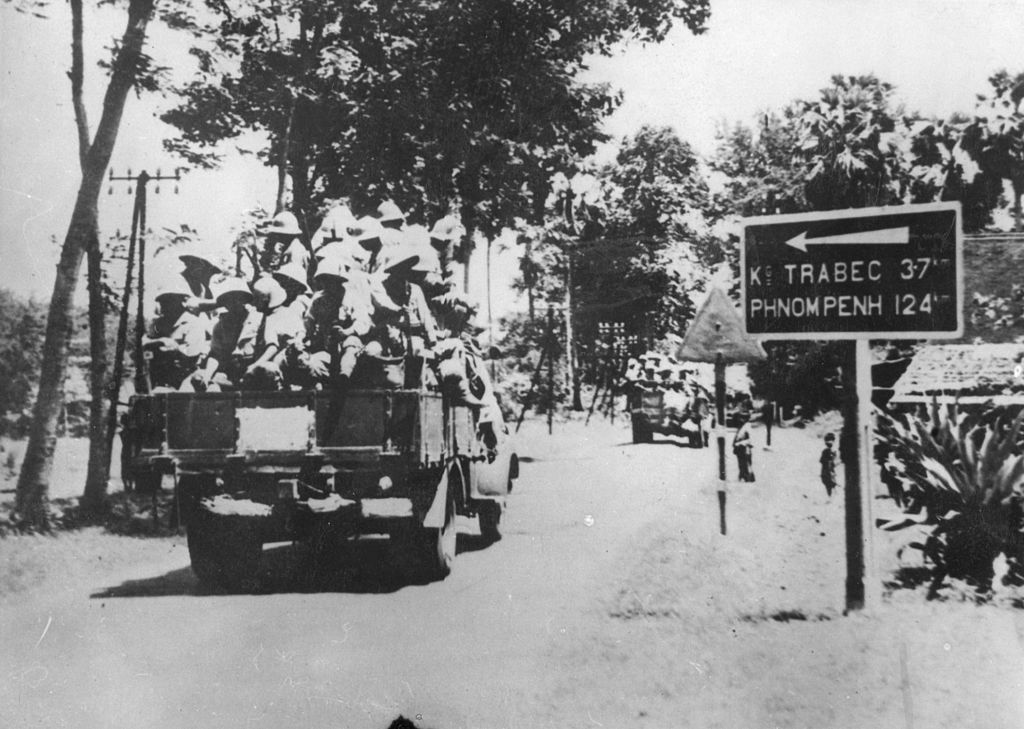In the shadows of the Second World War, a Chinese black market thrived until it was a “massive and complex enterprise.”
“Everyone with money played: soldiers and civilians, the Chinese Army, Japanese intelligence, and U.S. soldiers and airmen,” the report goes on to say. “It embraced whiskey and cigarettes, British fashions from India, and a brand-new Buick, if you wanted it. All that mattered was the trade and the money it generated. The rest was a wink and a nudge.”
For enterprising smugglers and others with loose morals, the underground trade was a chance at sudden riches. But for Canadian oilman and adventurer Laurence Gordon, it was something more: damn good cover for an extraordinary intelligence operation.
“Gordon presumably represented himself exactly as what he was: an expatriate Asia-hand, a former employee of an international company who knew his way around – and how to take advantage of the wartime economy that had evolved,” former U.S. State Department foreign service officer Bob Bergin writes in the report.
In reality, Gordon was the founder of what became known as the GBT group, a secret operation that worked alongside, but not for, Allied intelligence agencies during the Japanese occupation of what was then called Indochina. In a part of the world where the Allies were struggling to get any useful information, the GBT group’s network of amateur informants became one of the most effective spy rings of the war.
“Unlike classic agent nets run by professional intelligence services, the GBT group was fiercely protective of its independence on the grounds that it was its independence that assured its effectiveness,” Bergin points out.
A member of the U.S. Office of Strategic Services, the precursor to the CIA, said of the GBT group, “No other intelligence group, either military or civilian, had equaled their record of information collected and disseminated.”
Gordon, a former coffee planter in Kenya originally from Canada, went to Indochina before the war to help run drilling operations for the Cal-Texaco oil firm. He briefly returned to the U.S. after the war’s outbreak, Cal-Texaco convinced him to return to Southeast Asia to look after the company’s concerns.
When the Japanese attacked Pearl Harbor on Dec. 7, 1941, Gordon was recruited by British intelligence to do undercover work for them. But because of the complex rivalries between the U.S., Great Britain, France, China and Vietnam in Indochina, Gordon quickly realized that he had to keep the British – and everyone else – at “arm’s length,” Bergin’s article says.
“Gordon initially confined his activities to maintaining a company presence among former employees of Cal-Texaco,” according to a book by former OSS officer Archimedes Patti cited by Bergin. “Later, ‘under the guise of a free-lancing oil agent,’ he traveled throughout Vietnam. In the process he renewed old contacts among the French he had known and turned them into informants – ‘in the interests of salvaging their former company’s interests.’”
To help run the operation, Gordon recruited Frankie Tan, an American of Chinese descent in whom Gordon recognized a “capacity for risk-taking and subterfuge.”
The CIA says that though Tan was born in Boston, his family moved back to China before the war. When the Japanese invaded Nanking, where they were living, the family had to make a run for it. Tan did a stint with Chinese nationalists fighting the Japanese, but then joined up with an American company that was set up in Indo-China “by Chinese as cover for a smuggling operation.”
He was eventually captured by the Japanese with incriminating documents but managed to escape and evade his Japanese pursuers for months, blending into the back streets of Hanoi, Vietnam.
“That was where Gordon found him,” Bergin writes.
Rounding out the leaders of the group was Harry Bernard, who Bergin describes as the “steady one,” who was an “eminently dependable” manager and agent handler. Their names together – Gordon, Bernard and Tan – formed the name GBT.
Between them the GBT group, described by Bergin as “small and free-wheeling,” managed to recruit an assortment of local informers – from a Chinese farmer to locals in Hanoi. While the Allied intelligence agencies, especially the OSS, were jealous of the GBT ’s access, the Allies happily used the information the group provided – which was given to all of the allies equally. The OSS once estimated that Gordon was in touch with more than two dozen resistance groups with more than 500 total members.
One example of the sort intelligence Gordon’s group gathered, cited by Bergin:
An agent in Lang Son reported via radio that a Japanese general would attend a banquet the next day, hosted by the town’s magistrate. Details were quickly forwarded to the Fourteenth Air Force with a request for a small bombing mission. The agent later reported on the results: When the sound of aircraft accompanied the first course, “Don’t be alarmed,” the general said: The Japanese Air Force knew he was there; the flyover was their greeting. Then the first bomb dropped, and everyone ran to the shelter. Later, the meal started again and the sound of airplane engines recommenced; and now the general led the race for the shelter. This time it was the Japanese Air Force overhead.
An OSS officer who worked alongside the GBT group later said, “The more I got to know Gordon’s associates, the more I approved of them and him.”
The group operated successfully for years but began to deteriorate as Gordon ran into bureaucratic squabbles with the OSS which wanted desperately to take over the operation — and as events on the ground changed the geo-political calculous of Indochina as the end of the war in 1945 grew closer.
Still, Gordon and his gang hold a special place in history. “GBT is unique in the history of modern intelligence,” Bergin writes. “The three GBT principles were ‘amateurs’ only in the sense of being novices in the craft of intelligence. They brought to the endeavor first-hand knowledge of the hurly-burly world of early 20th century Asia and Japanese-occupied Indochina. Their operational environment was a confusion of nationalities and political rivalries. Understanding how this wartime culture worked and could be exploited was the most essential element necessary to conducting successful operations.”
This article was featured in the InsideHook newsletter. Sign up now.
























